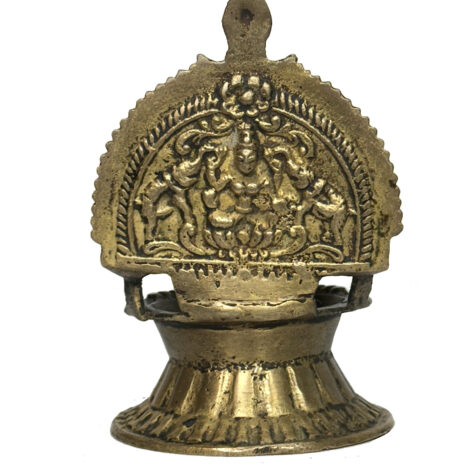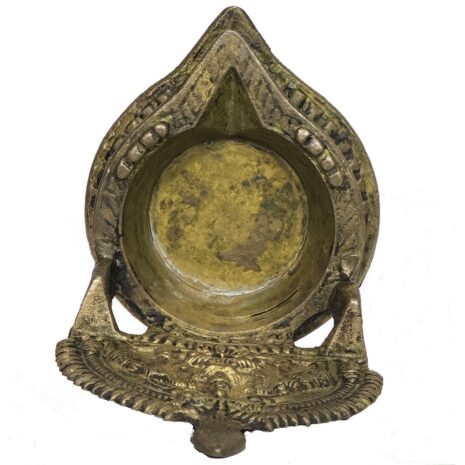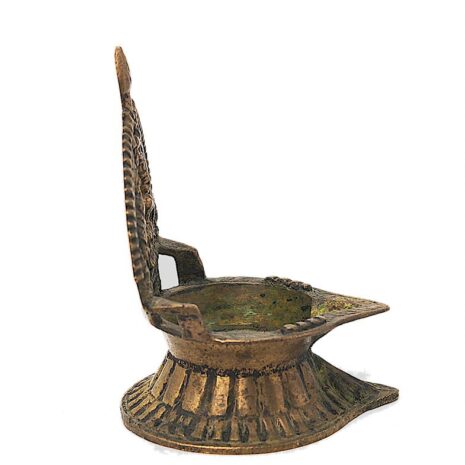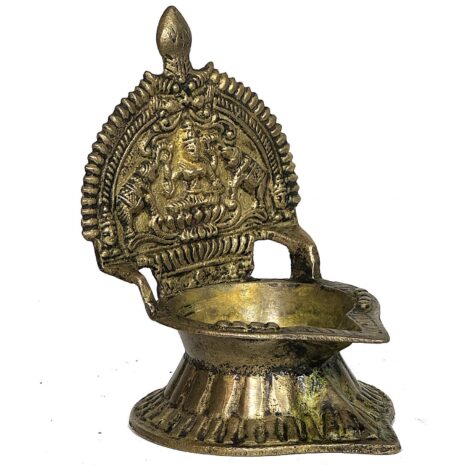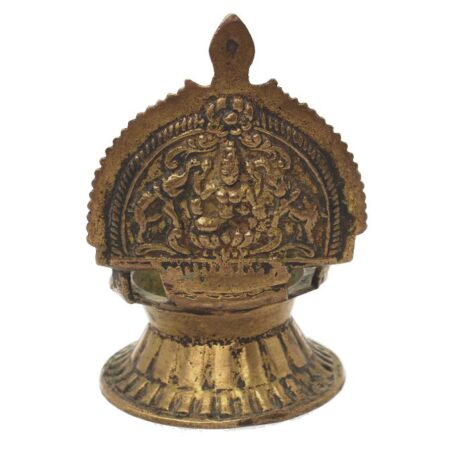Antique Brass Lakshmi Oil Lamp, India (9508D)
Original price was: $150.00.$120.00Current price is: $120.00.
H: 5″ W: 3.25″ D:3.875″ | FREE SHIPPING WITHIN CONTINENTAL U.S.
Brass oil lamp front and back Lakshmi on a lotus, elephants showering water bringing life to the land governed by wisdom and purity that leads to material and spiritual prosperity.
Description
Hindus use brass or mixed metalwork votive oil lamps (diya) for daily prayer rituals (puja). As light is the absence of darkness where evil forces dwell, lighting a lamp on a home altar signifies purity and goodness to convey good luck and power over evil. They are also used to honor arrival of a guest, mark the passing of a loved one and celebrate important life events.
This oil lamp called gajalaxmi diya depicts Lakshmi on front and back seated on a lotus throne (padmapitha), with four arms, her upper ones hold lotuses and the lower ones are in the gestures of fearlessness (abhaya) mudra with a hand up in protection and compassion, charity and the other in wish-granting (varada) mudra. The elephants (gaja) are mythical animals whose raised trunks pour water over her symbolizing her ability to provide abundance, prosperity, good luck and fertility. The bowl that holds oil is shaped as a yoni, the female womb, the ultimate symbol of fertility and generative power. She promises devotees material and spiritual attainment and personal charm. She is associated not only with the royal authority but also with spiritual authority, and she combines royal and priestly powers in her presence. The lotus, and the goddess Lakshmi by association, represent the fully developed blossoming of organic life.” (Kumin) As one of the most loved Hindu-deities, especially among women, these lamps are often taken into homes and temples to entice her and prosperity, of which she is a symbol, to reside inside.
It is in excellent good conditions with portions worn from being rubbed for good luck. The stamp on the bottom indicates it place of manufacture. Lakshmi diyas are often used as gifts for weddings, anniversaries, housewarmings and for Diwali, the festival of lights. The third and most festive Diwali day is dedicated to Lakshmi.
Click here for Hindu Home and Temple Shrines and Religious Practices Blog
Sources
Sean Anderson, Flames of Devotion: Oil Lamps from South and Southeast Asia and the Himalayas, Los Angeles, UCLA Fowler Museum of Cultural History, 2006.
J. Leroy Davidson, The Art of the Indian Subcontinent from Los Angeles Collections, Los Angeles, Regents of the University of California, 1968.
David R. Kinsley, Hindu Goddesses: Visions of the Divine Feminine in the Hindu Religious Tradition, Berkeley, University of California Press, 1985.
Nitin Kumin, Laksmi and Saraswati – Tales in Mythology and Art, www.exoticindia.com, December, 2000.
James A. Santucci, A Loan Exhibit at The Library, California State University, Fullerton: April-July, 1986, Fullerton, California State University, 1987.
Additional information
| Place of Origin | India |
|---|---|
| Period | Antique (1200-1920) |
| Date | Late 19th/Early 20th Century |
| Materials and Technique | Bronze/brass/copper alloy |
| Dimensions (inches) | Ht: 5” W: 3.25” D: 3.875” |
| Dimensions (metric) | Ht: 12.7cm W: 8.25cm D: 9.84cm |
| Condition | Excellent, fine patina demonstrating age and use, no restorations/repairs |
| Item Number | 9508B-PBE |
| Weight | 9.9oz |
| Shipping Box Size | |
| Width | 0” to 5.9” |

